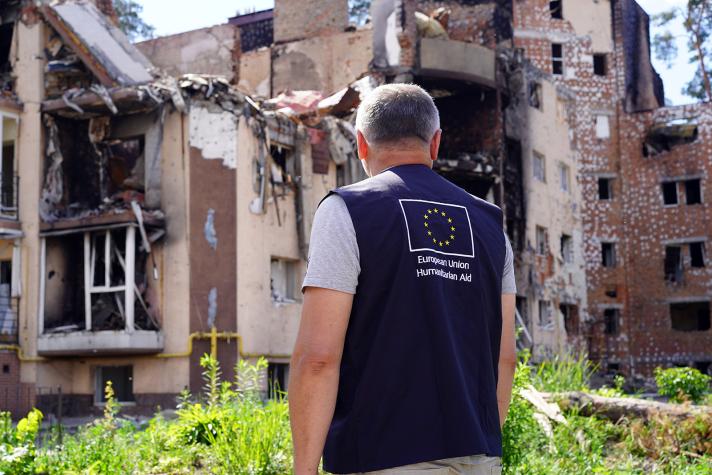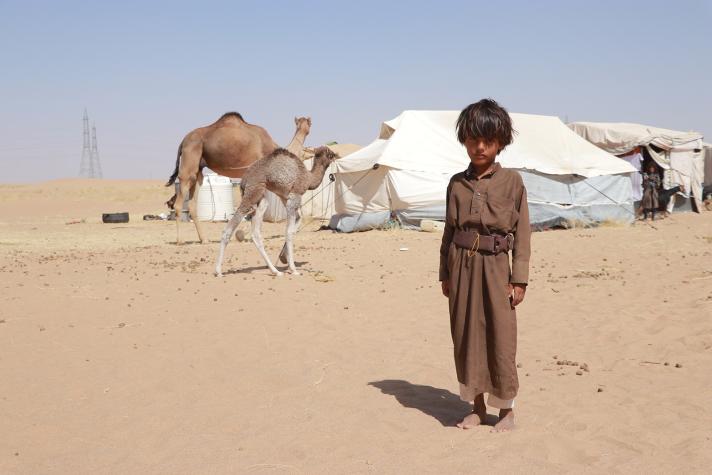[ad_1]
In 2022, the EU and its Member States were among the leading donors of humanitarian aid in the world.
Last year brought unprecedented humanitarian challenges, mainly driven by climate change, the war in Ukraine, conflict, and disease. And the number of people in need keeps growing in 2023 – according to the UN, more than 339 million people will require humanitarian assistance this year.
Here are 7 key crises in the world to watch closely this year, to which the EU will continue to provide humanitarian and civil protection assistance.
1. Africa: under-reported crises
© European Union, 2022 (photographer: Eduardo Soteras Jalil)
Key fact: In 2022, the 10 most under-reported humanitarian crises were all in Africa
From Niger and Chad to Zimbabwe and Zambia, the 10 most under-reported humanitarian crises during 2022 were all on the African continent. Hundreds of millions of people are internally displaced due to conflict, or have sought refuge in neighbouring countries.
Droughts and other extreme weather events, and the repercussions of Russia’s war of aggression against Ukraine, have resulted in food insecurity, which has particularly affected Africa.
Millions of children are chronically malnourished. Maternal mortality rates are very high. Climate-related disasters are escalating.
2. Afghanistan: displaced persons and severe food crisis

© Kern Hendricks for Danish Refugee Council. All rights reserved. Licensed to the European Union under conditions.
Key fact: 28 million people are expected to require humanitarian assistance.
Due to decades of conflict, recurrent natural hazards, and a sharp economic decline, more than 5.7 million Afghans and host communities in 5 neighbouring countries need support.
To help 6 million citizens that survive on less than 1 meal per day, the EU humanitarian aid focuses on food security, health care, and nutritional support.
In 2022, the EU allocated more than €174 million in humanitarian support to aid organisations operating in Afghanistan and the region.
3. Ukraine: endangered lives and severe infrastructural damage

© European Union, 2022 (Photographer: Lisa Hastert)
Key fact: 5.9 million people internally displaced and millions without access to basic needs.
The Russian invasion of Ukraine triggered the fastest-growing refugee crisis in the world, forcing millions of people to leave their homes.
The ongoing war endangers the lives of civilians and causes severe damage to housing, water and electricity supply, heating, and public infrastructure such as schools and health facilities.
So far, the EU has allocated €485 million for humanitarian programmes in Ukraine. The funding will help provide food, water, essential household items, health care, emergency and winterised shelter, and education actions.
4. Yemen: growing hunger and scarce healthcare services

© Solidarités International/Abudllah Al Jaradi. All rights reserved. Licensed to the European Union under conditions.
Key fact: 23.4 million people need humanitarian aid and 17.4 million face acute food insecurity.
Millions of Yemenis are displaced, destitute, and hungry. The humanitarian situation continues to deteriorate, compounded by increasing food and fuel prices, collapsing public services, economic crises, and natural hazards.
The country’s public health system is on the verge of collapse, leading to recurrent epidemic outbreaks and transmissible diseases. There is a need to increase aid, improve humanitarian access, and address the political and economic drivers of the crisis.
5. Venezuela: deep economic, social and political crisis

© European Union, 2020 (photographer: S.Castañeda)
Key fact: Around 18.7 million people require food assistance.
Venezuela still shows a severe scarcity of food, water and essential goods, compromising the daily lives of a large part of the population. Since 2016, the European Union has allocated €315 million in emergency humanitarian aid for Venezuela.
More than 7.1 million Venezuelans have left the country since 2015. Inside the country, 90% live in poverty, according to Encovi. The EU considers the displacement of Venezuelans in Ecuador and Peru as a “forgotten crisis”.
The assistance to refugees and internally displaced people focuses on emergency medical services, food assistance, the provision of legal information and support, protection initiatives (specifically against gender-based violence and human trafficking), education in emergencies, and shelter.
6. Syria: unparalleled suffering and humanitarian needs

©WeWorld/GVC. All rights reserved. Licensed to the European Union under conditions.
Key fact: 14.6 million people in Syria require assistance.
Food prices in Syria are rising while food availability is decreasing, with almost 2/3 of Syrians facing food shortages. Russia’s war on Ukraine has further raised prices, leaving 65% of the population food insecure.
Over 3 million people are internally displaced, and 8.2 million vulnerable people need life-saving aid. Since the crisis started in 2011, the EU and its Member States have mobilised more than €27.4 billion to support the most vulnerable Syrians.
With needs greater than ever, the EU also supports the UN’s humanitarian air services, which facilitate the delivery of aid and the transport of humanitarian staff to areas with limited access.
7. Climate related disasters: rising wildfires, floods, and droughts
[ad_2]
Source link



